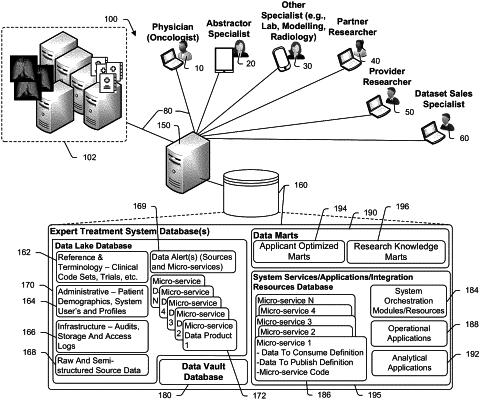| CPC G16H 10/60 (2018.01) [G16B 30/00 (2019.02); G16B 40/20 (2019.02); G16H 15/00 (2018.01); G16H 20/10 (2018.01); G16H 20/40 (2018.01); G16H 50/20 (2018.01); G16H 50/30 (2018.01); G16H 50/50 (2018.01); G16H 50/70 (2018.01)] | 20 Claims |

|
1. A method for conducting genomic sequencing, the method comprising the steps of:
storing a set of user application programs wherein each of the programs requires an application specific subset of data to perform application processes and generates a respective genomic variant characterization; and
for each of a plurality of subjects that have cancerous cells and that receive cancer treatment:
a. obtaining clinical records data in original forms where the clinical records data includes cancer state information, treatment types and treatment efficacy information;
b. for each subject, using a next generation genomic sequencer to generate genomic sequencing data for the subject's cancerous cells and normal cells;
c. shaping at least a subset of the genomic sequencing data to generate system structured data;
d. storing the system structured data in a first database; and
e. for each user application program;
i. selecting the application specific subset of data from the first database;
ii. storing the application specific subset of data in a structure optimized for application program interfacing in a second database; and
iii. receiving the respective genomic variant characterization from the user application program for each subject of the respective plurality of subjects; and
iv. storing the respective genomic variant characterization received from the user application program for each subject of the respective plurality of subjects in a third database.
|